 |
|
 |
 |
 |
 |
| |
New Japanese Regulatory Systems for Components and Parts
〇New Japanese Regulatory Systems for Components and Parts
〇Circular No.1-502 "Handling of Components etc. to be installed in Aircraft"(Applicable on and after 18 June, 2022)
〇Circular No.2-001 "General Policy for Approved Organizations" (Applicable on and after 18 June, 2022)
〇Amendment of Civil Aeronautics Act (Applicable on and after 18 June, 2022)
〇Amendment of Ordinance for Enforcement of the Civil Aeronautics Act (Applicable on and after 18 June, 2022)
〇JCAB Approved Organization System |
| |
|
 |
Securing aviation safety
Viewed over the long term, aviation safety has improved in Japan.
The number of aircraft accidents in 2006 was the lowest in the past 50 years. Japanese air carriers have not had a fatal accident since 1986. However, it is essential to further enhance aviation safety with the aim of achieving a zero rate of accident occurrence so that people can continue to trust air transport as the safest means of travel.
To this end, the Civil Aviation Bureau conducts the following activities 1) inspections of aircraft and equipment, 2) checks of the operation and maintenance systems of the air carriers, 3) confirmation of the competency of aviation personnel, such as pilots and mechanics, through examinations and other checks, and 4) ramp inspections of foreign registered aircraft at airports in Japan.
In addition, Japan actively participates in the activities of the ICAO to develop international standards, and ensures aviation safety by adopting the ICAO international standards and recommended practices into its own laws and regulations.
|
 |
| Number of aircraft accidents in Japan |
|
|
 |
Ensuring safe and efficient operations
Japan has seen changes in its own aviation industry in recent years. Several new carriers have started service and two large carriers merged. Ensuring the safety of operations of these new entities has become an important issue. |
 |
The Civil Aviation Bureau examines whether air carriers are able to conduct their operations safely whenever new air services are launched, and inspects their facilities for the operations, maintenance, and training. In addition, JCAB confirms satisfactory conditions through regular on-the-spot inspections.
Safety standards and rules for new operating practices and procedures, such as RVSM, are developed and implemented by introducing latest technology and best practices.
|
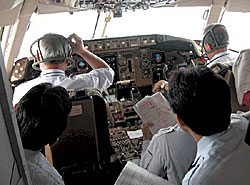 |
 |
Ensuring the safety of foreign aircraft
In December 1999 Japan has begun ramp inspections of foreign registered aircraft at Japanese airport in accordance with the provisions of the Chicago Convention. These inspections are directed to the safety of the operations and the aircraft. When a problem is found during these inspections, JCAB will notify it to the government of the country who is responsible for the foreign operator and request to remedy. |
 |
Japanese Companies participating in the Development programs of the advanced Airliners.
|
 |
Several Japanese companies are actively joining in the development programs of the advanced airliners, such as Boeing 787 and Airbus A-380. The Civil Aviation Bureau will cooperate with the appropriate foreign civil aviation authorities to ensure their safety. |
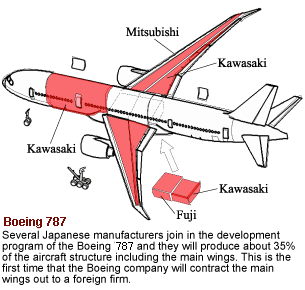 |
 |
Development of an Environmentally Friendly Regional Jet and Small Aircraft Jet Engine
|
 |
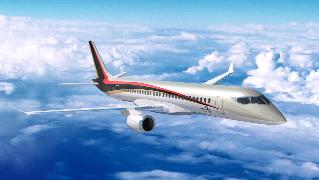 |
The Japanese government and several companies are cooperating in the development of a 70-90 seats jet aircraft. Over 40 years have passed since the development of the first Japanese Transport Category aircraft, the YS-11 in 1962. The new aircraft will likely utilize several new technologies. Thus the CAB will conduct related research, certification procedure, in order to evaluate environmental and safety conformity with applicable regulations.
|
 |
In addition, the government and several companies are also developing an advanced jet engine for this new 90 seat class aircraft. This engine is expected to greatly improve aircraft fuel efficiency and also improve environmental suitability by reducing noise and emissions with new technologies. The Civil Aviation Bureau will also perform its responsibility when necessary.
|
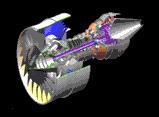 |
 |
 |
Competence certification for airmen (pilots, mechanics, etc.)
To prevent aircraft accidents, the operational skills of the pilots and the quality of maintenance by mechanics are highly important. To enhance the safe operation of aircraft, the Bureau conducts written examinations and practical examinations for airmen in order to issue competence certificates, in accordance with the Annex 1 to the Convention on International Civil Aviation. In addition, the Bureau issues aviation medical certificates to pilots. Moreover, Japan has developed the Japanese language Proficiency Certification System for pilots operating international flight from 2006. In the future, the demand for civil aviation personnel will grow since the demand for air transport in Japan is expected to steadily increase. Under these circumstances, it is important to properly certify their competence and medical fitness on a continuing basis |
| Nunber of competence certificates issude in 2006 |
|
|
 |
Personnel training
To ensure the sufficient supply of air transport service, it is necessary to provide sufficient pilots to meet the demand.
The Civil Aviation College, an independent administrative institution, carries out the training of pilots and most of its graduates work for the Japanese air carriers.
In addition, the Bureau approves training facilities to ensure that such facilities offer training of good quality, which contributes to providing sufficient well-qualified pilots and mechanics. Those who have completed training at the Civil Aviation College or other approved training facilities are exempted from the practical examinations for competence certification.
|
 |
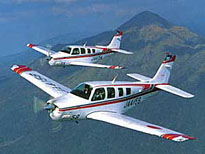 |
| Civil Aviation College |
| Location : |
Miyazaki, Sendai and Obihiro |
| Trainees : |
72 per year |
| Training period : |
24 months |
| Fleet : |
RAYTHEON C-90A
RAYTHEON A-36 |
|
 |
Circulars for Aircraft Safety
The Civil Aviation Bureau issues circulars for aircraft safety to provide the policy, standards, guidance and other information related to JCAB activities such as certification of aircraft, approval of maintenance organization and approval of air-carrier's maintenance program. |
 |
Airworthiness Directives
In accordance with the Annex 8 to the Convention on International Civil Aviation, the Civil Aviation Bureau issues the Airworthiness Directives for some aircraft as the State of Design. The Airworthiness Directives require the inspection, the modification, the repair, the change of the operational procedures and some other corrective actions to ensure the continuing airworthiness of the aircraft. |
|
|












